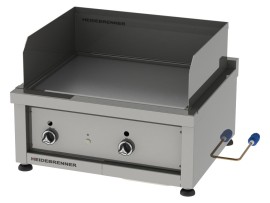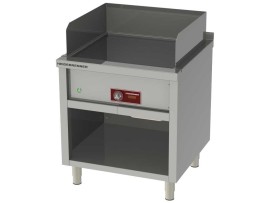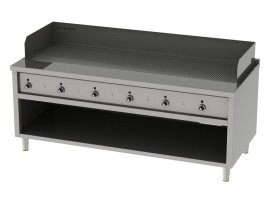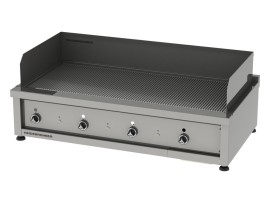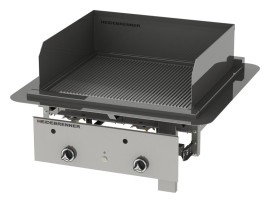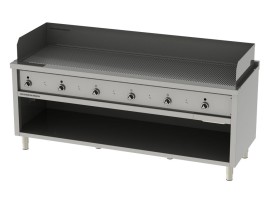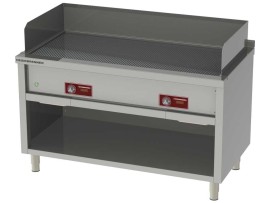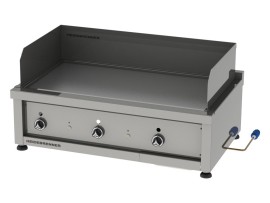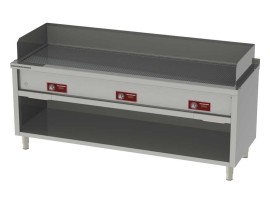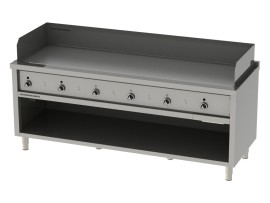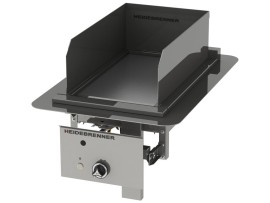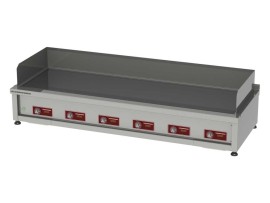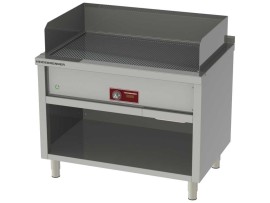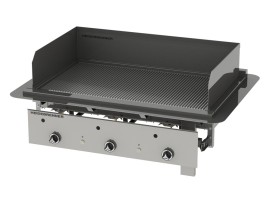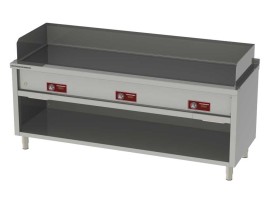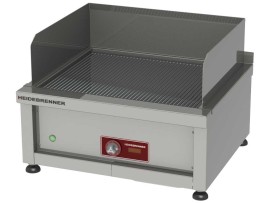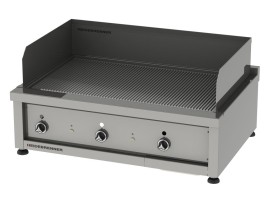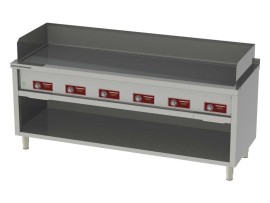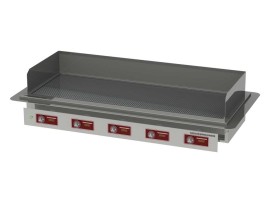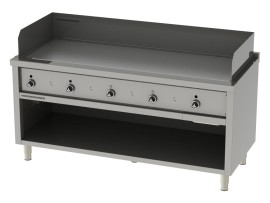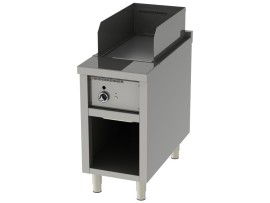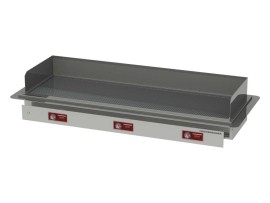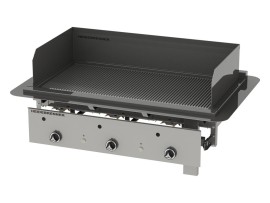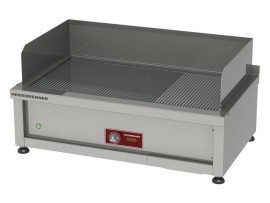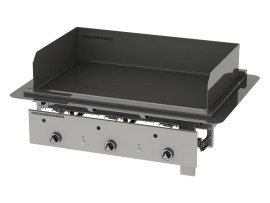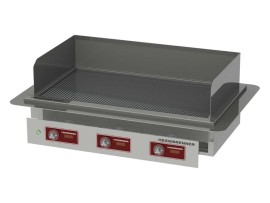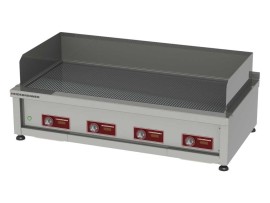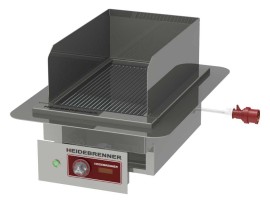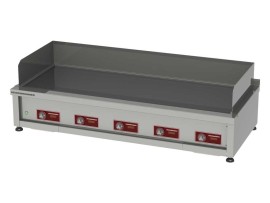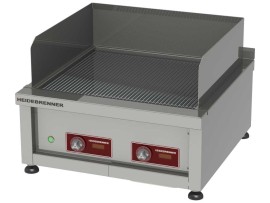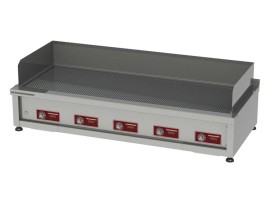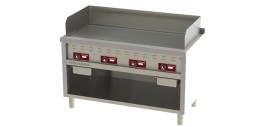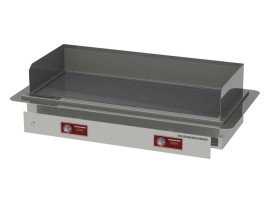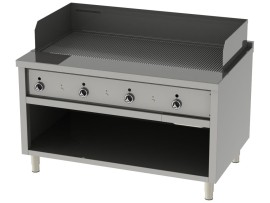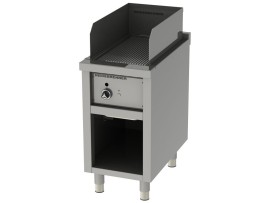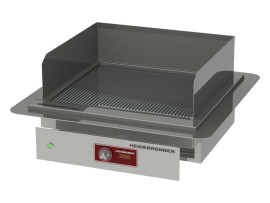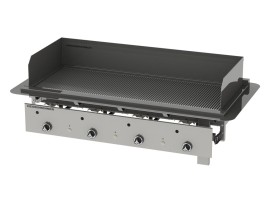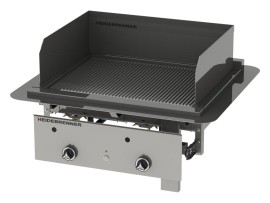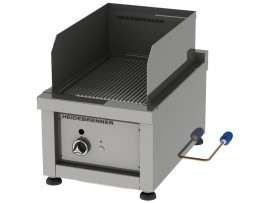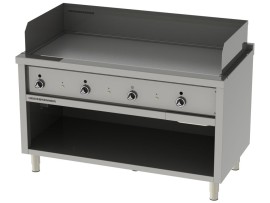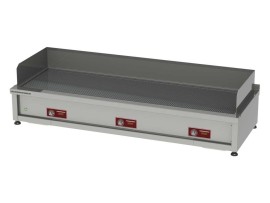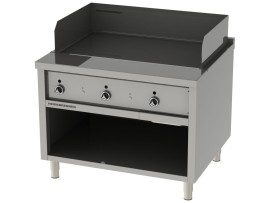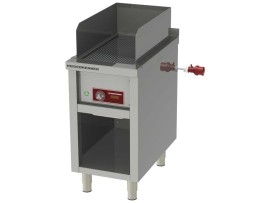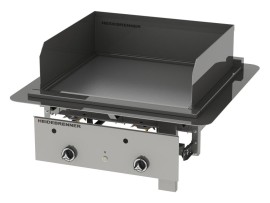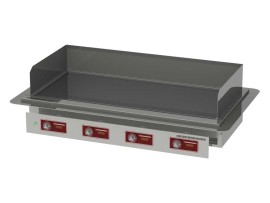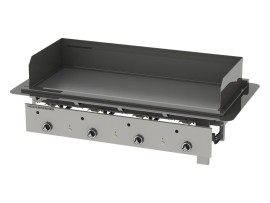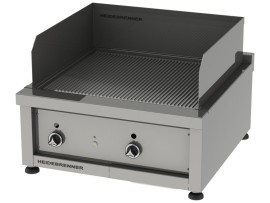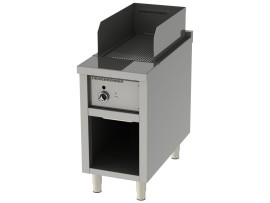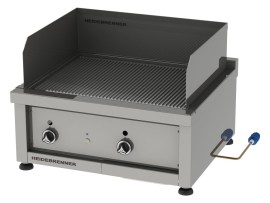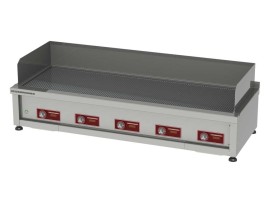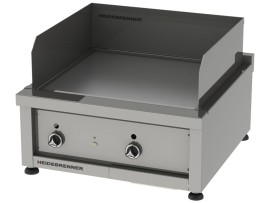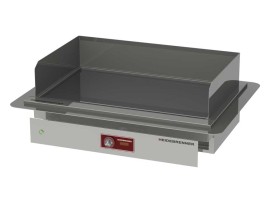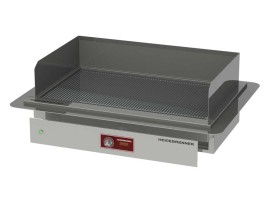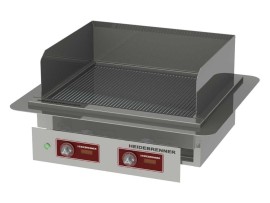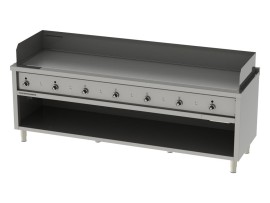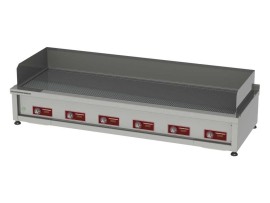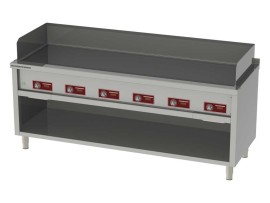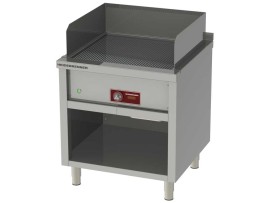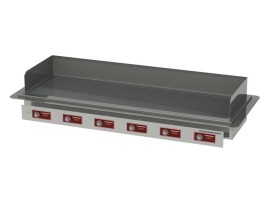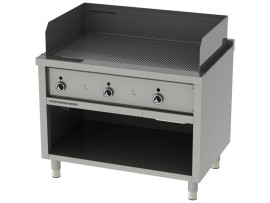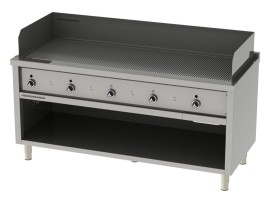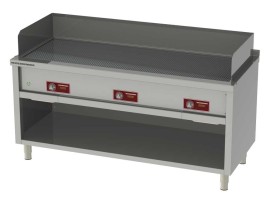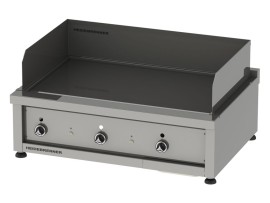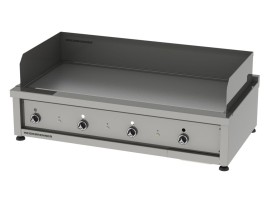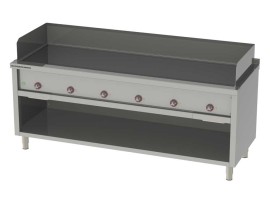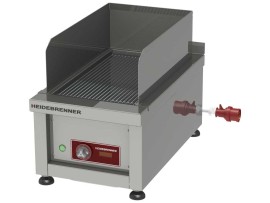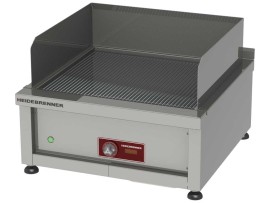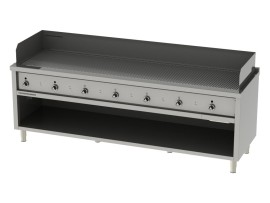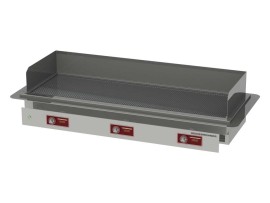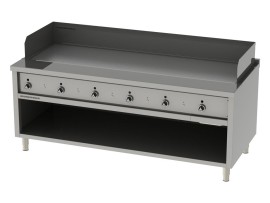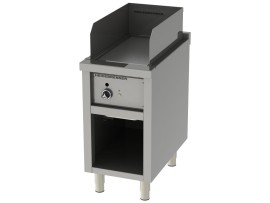Healthy grilling and cooking with teppanyaki
The Teppanyaki grill consists of a closed, flat grill/cooking plate that is mounted directly above the heat source. The grill enables fat-free or fat-reduced quick frying of fish, vegetables and meat or even desserts. These grills are often integrated into the restaurant counter or directly into the guest table to create an interactive atmosphere. Teppanyaki is characterized by fast cooking and precise temperature control. The resulting temperatures of 180 °C to 210 °C are ideal for frying ingredients in the shortest possible time. Flavors and nutrients are retained.
Choosing the right teppanyaki grill:
As with so many things, there isn't one teppanyaki grill. You can already choose between a gas or electric grill when it comes to the type of energy. Which material do you prefer? Stainless steel is strong, powerful, easy to clean and corrosion resistant. Cast iron scores with its excellent heat storage capacity, but it is more complex to look after. Similar to stainless steel, chromium-nickel steel is extremely robust and durable. Ceramics are also a popular material for teppanyaki grills. It offers excellent thermal conductivity and is easy to clean.
The advantages of the Teppanyaki grill
The Teppanyaki style of grilling has long since arrived in many restaurants around the world. Not without reason - after all, this method of preparation offers a multitude of advantages.
Versatility: A teppanyaki grill allows you to cook a variety of dishes such as vegetables, meat, seafood, egg dishes and even desserts.
Versatility: A teppanyaki grill allows you to prepare a variety of dishes such as vegetables, meat, seafood, egg dishes and even desserts.
Precise Temperature Control: The teppanyaki allows the heat to be precisely controlled. This allows the ingredient to be cooked evenly and to the point.
Efficiency: Due to the direct contact of the stainless steel plate with the heat source, the heat is transferred to the food without much loss of energy.
Healthy preparation: When grilling Teppanyaki , you need little or no oil. Excess fat and oil can drain off due to the slight inclination of the plate.
Ease of use: The grill is easy to use and does not require complicated preparations. Cleaning is also quick and easy
Social Experience: The Teppanyaki grill offers an interactive and social cooking experience. The guests can experience the cooking and the preparation of their dishes live or even work as a grill master themselves.
The right size
When choosing the ideal size, you should consider factors such as the number of seats, the type of restaurant (e.g. buffet, a la carte) and the expected demand. To give you a better idea: up to 250 burger patties per hour can be perfectly prepared on a Teppanyaki griddle with a surface of 80 × 75 cm and an output of 11.6 kW. The location also plays a role when choosing the size: Would you like to place the plate in the kitchen, place it in the form of a counter in the guest room or integrate it directly into the tables?
Powerful grills
In professional gastronomy, it is important that the teppanyaki grill has sufficient power to quickly reach high temperatures and keep them constant. A professional grill can typically have an output of 6 kW to 15 kW or even more. This ensures that food is prepared efficiently.
Table, standing or built-in variant
A tabletop teppanyaki grill is a compact grill that you place on a table or countertop. You can move it easily. Tabletop teppanyaki grills are ideal for use in smaller kitchens, restaurants or at outdoor events.
A free-standing teppanyaki grill can be placed independently of a table or countertop. It is ideal for restaurants or catering establishments that require a larger capacity.
Built-in teppanyaki grills are permanently integrated into a kitchen worktop or the restaurant table. They are a durable solution for everyday use.
How to clean your teppanyaki grill
Regardless of the frequency of use, a teppanyaki grill must be cleaned regularly. This prevents the taste of the previous grilled or cooked food from being transferred to the next dish.
After each use and before changing different items to be grilled, you should clean both the grill and the accessories. If residues are not removed after each use, bacteria and a layer of charred residue will quickly develop. The latter in particular is difficult to remove over time. It also acts as a heat dampener and impairs the cooking of the food.
Here´s how it´s done:
First remove coarse frying residues with a spatula. Now clean the grill surface with a damp sponge or a stainless steel spiral under cold water. After these steps, the teppanyaki grill is ready for the next round. At the end of the day, you should also empty, rinse and disinfect the drip tray and clean the plate properly with washing-up liquid.
For stainless steel plates, grill scrapers are the right utensil to remove excess residue and grease. Rub off stubborn food residues with a scouring stone. For chrome and glass surfaces, do not use harsh cleaning agents or tools.
Teppanyaki grills have become indispensable in professional gastronomy
The Teppanyaki grill has established itself as a popular and versatile kitchen appliance in professional gastronomy. With its generous grilling surface, precise temperature control and efficient performance, it enables a variety of dishes to be prepared quickly. The direct heat transfer and contact with the stainless steel plate ensure even and controlled cooking of the food. The plates are robust, durable and easy to clean, making them ideal for intensive use in professional catering. Through the interactive cooking method, teppanyaki grills create a fun experience for guests.
FAQ
What is the difference between teppanyaki and other types of grilling?
Unlike other types of grilling, teppanyaki is cooked on a smooth, flat surface, often made of stainless steel. The teppanyaki also enables more precise temperature control and thus better control of the cooking process. In addition, the flat grill allows for an even distribution of heat.
How big should a teppanyaki be for a restaurant?
The size of the teppanyaki grill for a restaurant depends on various factors such as the number of guests, the type of restaurant, the space available and the budget. In general, however, it's a good idea to choose a grill that's big enough to handle the restaurant's demand, but not too big to save space and work efficiently. The size of the teppanyaki grill affects the number of cooks that can work on the grill surface at the same time.
Which material is best for the teppanyaki ?
The material best suited for the teppanyaki grill is stainless steel. It is the material of choice for grilling surfaces due to its excellent thermal conductivity and resistance to corrosion and rusting. Stainless steel is easy to clean and maintain, which is important for restaurants that frequently use teppanyaki grills. It is tough and resistant to scratches, wear and tear, and deformation, which is critical to longevity.
How often should I clean and maintain the teppanyaki?
The rhythm of cleaning and maintenance depends on how often the grill is used. There are the following recommendations:
Daily cleaning: You should clean the teppanyaki grill thoroughly after each use. Remove food residue and grease with a spatula and wipe the surface with a grill cleaner.
Weekly Cleaning: A more thorough cleaning of all parts of the grill should be performed once a week.
Regular Maintenance: The teppanyaki grill should be checked regularly for wear parts such as hoses and nozzles. The gas connection must also be checked regularly. If necessary, replace the worn or leaking parts.
What accessories are needed for the teppanyaki ?
The equipment you need depends on the specific teppanyaki grill and the type of dishes you want to cook with it. In general, the following accessories are required:
-
Spatula for turning and stirring
-
Oil brush
-
Barbecue tongs
-
Barbecue fork
-
Cover when not in use
-
Cooking bell
-
Cleaning utensils


